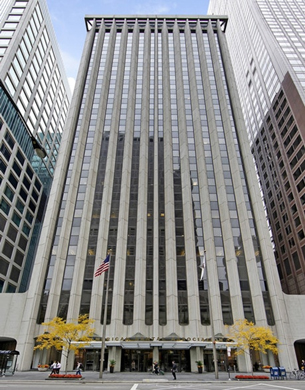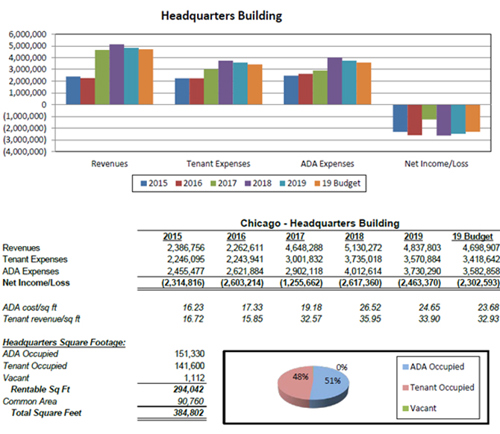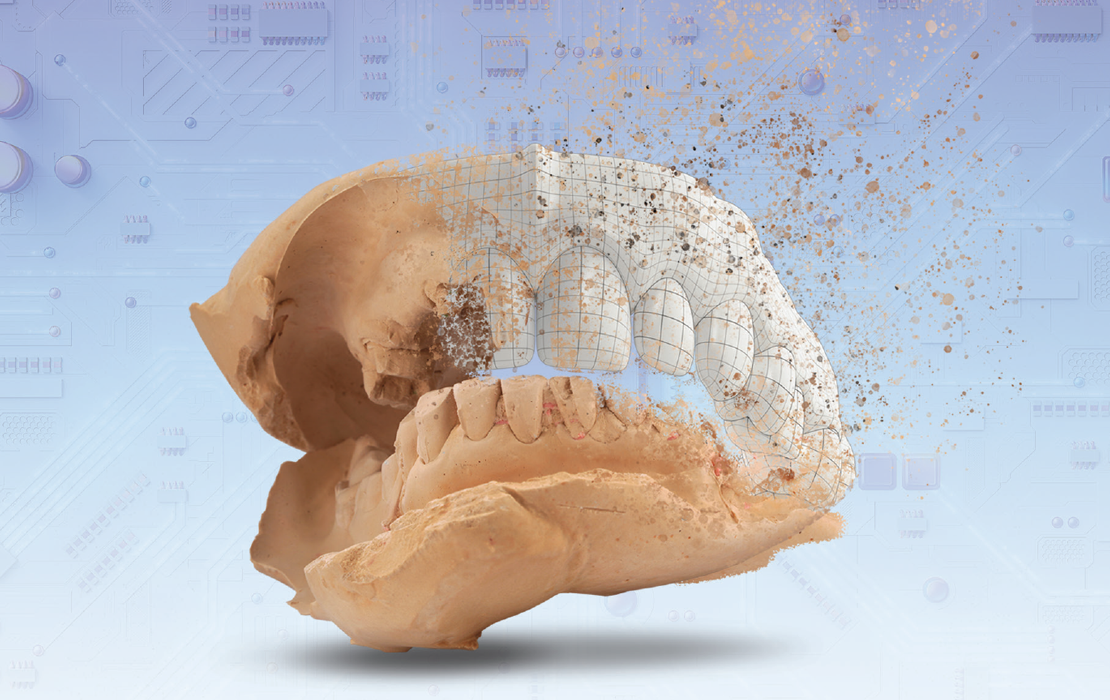ADA treasurer offers deeper dive into building sale

Editor’s note: ADA Treasurer Cody Graves, D.D.S., M.B.A., sends periodic e-newsletters to the House of Delegates. The Sept. 4 newsletter focused on the sale of ADA headquarters in Chicago, why the decision was made and the financial impact. ADA News has repurposed the newsletter below.
Welcome to the latest installment in a series designed to explain, from a financial perspective, major ADA initiatives. This letter focuses on the sale of our longtime headquarters at 211 E. Chicago Ave., and the newly leased space at 401 N. Michigan Ave.
211 E. Chicago Avenue
The building at 211 E. Chicago Ave., in Chicago is a 23-story high-rise constructed in 1965. This mid-20th-century commercial architecture building stands 330 feet tall and encompasses approximately 279,686 square feet of office space.
For nearly six decades, the building housed the American Dental Association’s administrative offices, educational programs, professional services and laboratory facilities. In 2024, the building was sold to Ann & Robert H. Lurie Children’s Hospital of Chicago.
The hospital had been leasing space in the building and acquired it to expand its administrative capabilities and consolidate operations adjacent to its main facility at 225 E. Chicago Ave.
History
For many decades, the ADA’s Chicago headquarters building served not only as a destination for dentists as a venue for meetings, but also as a source of nondues revenue from rental tenants. The following chart shows the HQ building financial results and occupancy statistics through December 2019, the last full year prior to the onset of the COVID-19 pandemic:

The COVID-19 pandemic dramatically changed the commercial office space market. In addition, other operating costs and risks increased while asset utilization by ADA staff decreased. This effectively translated into lower operational value to owning and controlling such a large asset.
While the ADA has historically done very well as a successful landlord and generated healthy revenue with near 100% occupancy from tenant rental spaces, the future outlook for this level of continued success was doubtful.
ADA needs assessment
As the building aged, the ADA made functional repairs as needed, and some of these were funded from ADA reserves. However, because the last major ADA office and meeting space renovation was completed in stages between 1998 to 2005, ADA management in 2018 issued a request for proposal to space consultants who would assess the Association’s usage patterns and needs, then identify options and costs for potential space utilization changes.
The space study found that several office areas were being used below acceptable levels based on current standards. These findings supported the ADA’s plan to reduce its office footprint by more than 40% — from approximately 136,000 square feet to 80,000 — either within the existing building or at a new location, without compromising productivity, event hosting capabilities, or the need for flexible, collaborative meeting spaces.
After the height of the COVID-19 pandemic, the ADA would require even less office space than it once did. Like other organizations, the ADA adopted a hybrid work modality in which most local staff work in the office two days a week while some work remotely on a full-time basis. Plus, with the formation of the ADA Forsyth Institute, our science operations later relocated to Massachusetts.
Building sale opportunity
The ADA Board of Trustees received a letter from Lurie Children’s expressing interest in purchasing the ADA’s HQ building. In December 2022, the ADA engaged a real estate broker to conduct an evaluation of the ADA’s workplace and current HQ focusing on the people and maximizing value in the key asset of the ADA building.
The stated goal was to deliver a guiding document to assist with decision-making regarding the ADA’s property and occupancy while also focusing on how the ADA can enhance its support of its employees and members. With this engagement, the ADA specifically requested information about different options to maximize value from the HQ building.
This assessment project considered multiple market valuation scenarios. The most relevant, given the offer, assumed the buyer would fully occupy the property with no additional leasing or capital improvement costs. The market value under that scenario ranged from $79–87 million. This value was considered in combination with other relocation options.
Based on an extensive analysis and review of these different scenarios, the ADA Board ultimately decided to sell the ADA HQ building at 211 E. Chicago Ave. to Lurie Children’s.
The ADA and Lurie Children’s negotiated a final purchase price of $99.5 million, and after deducting and accounting for various expenses in the sale process, the ADA ended up with $98.2 million. We were able to lease back our own space while the remodeling process at 401 N. Michigan Ave. neared completion.
Other alternatives for ADA HQ space
Although the ADA could have purchased another office building in Chicago or the surrounding suburbs, the costs of customization and ongoing burden of managing and marketing any excess space for tenant rental in a down market made this option less appealing.
However, the soft leasing market for tenants meant that there were a lot of incentives and attractive rental rates for highly desirable properties. The ADA’s lease negotiations for 401 N. Michigan Ave. resulted in a favorable rental rate starting at $29.50/sf, adjusted rent abatement for the first 12 months, and a very high Tenant Improvement Allowance contribution raised from the landlord of $13,339,833 ($191.74/sf) to partially cover buildout.
401 N. Michigan Avenue
The ADA now occupies the top four floors of the iconic Equitable Building, a 1965 modernist tower designed by Natalie de Blois of Skidmore, Owings & Merrill — one of the first prominent female architects in the U.S. The building’s elevated plaza, Pioneer Court, honors the original settlement location of Jean Baptiste Point du Sable, widely recognized as Chicago’s founder. Its distinctive setback was designed to preserve views of the adjacent Tribune Tower.
Inside, the new headquarters supports the ADA’s mission with purpose-built spaces designed for collaboration, leadership, and innovation.
Features include a 44-seat executive boardroom table with hardwired tabletop microphones, integrated displays, and overhead cameras.
Similar to the previous headquarters, the space at 401 N. Michigan Ave. includes a video studio, multipurpose learning center, café, and executive dining area.
To accommodate ADA offices in the new location, an extensive remodeling effort was required. The work was coordinated and shared between the building owners CBRE Global Investors and the ADA. The ADA initially covered the full cost of the remodel project, which totaled approximately $28 million. The building owners have since reimbursed the ADA for their 50% share of that cost. That said, the ADA will still have used $14 million from reserves to update our new offices and location.
We have transformed from being a landlord to tenants in a newly renovated building. Now, instead of receiving lease payments, we are paying a lease of about $4 million per year. This will naturally increase by 2.5% each year. We do have an out clause for one of the floors at the end of years 6 and 10, and an out clause for the entire space at the end of year 10.
Pros/cons
Why did we sell the 211 building? That question has been asked numerous times over the past few months. Here are some reasons:
-
The purchase price was much higher than the estimated market value of 211 E. Chicago Ave. in 2024.
-
The proceeds from the sale of the HQ building were deposited into a separate HQ building quasi-endowment fund. The use of which is dedicated solely to cover the costs associated with rent and other expenses of our new HQ offices.
-
The 211 E. Chicago building needed significant remodeling. The last major renovation was done between 1998 and 2005. Per the 2018 needs assessment, the building was due for approximately $20-$30 million in renovations to improve space utilization/productivity and to meet the Americans with Disabilities Act and other building code upgrade requirements.
-
Lurie Children’s sought more office space and may have planned to move to an adjacent building (and, in turn, removing the ADA’s leaseholders) if not for this purchase.
-
Bonuses at the new location: 250 parking spaces, bike storage, conference rooms, a fitness center, fantastic views, a café that serves Starbucks, and access to the popular Chicago River Walk.
In closing
I appreciate the time and energy each of you has put into this Association, and I thank you for spending a few minutes of your day getting updated on the ADA finances. As always, if you need more information or clarification, please do not hesitate to send me an email. The next letter will be the second and final letter on the ADA Forsyth Institute.
Editor’s note: After Dr. Graves’ initial newsletter was sent Sept. 4, he sent a clarifying addendum to the House of Delegates on Sept. 8 outlining the valuation of the former ADA building. The text of that email is below.
I would like to clarify information on the valuation of the former ADA building at 211 E. Chicago Ave. that was recently noted in the September 4 Treasurer’s newsletter. Back when the Board considered selling the building, an assessment was prepared by Jones Lang LaSalle (JLL) which evaluated three market-oriented scenarios for the building’s value:
-
Scenario 1: sold 45% occupied, assuming ADA vacated, and the property was 55% vacant, with estimated investor values of $28–30 million;
-
Scenario 2: sold fully occupied, assuming the Buyer leased ADA’s vacated space and after accounting for leasing costs, with estimated values of $40–56 million; and
-
Scenario 3: sold fully occupied by the Buyer only, assuming no additional leasing or capital costs, with estimated values of $79–87 million.
At the time of the sale, the 211 E. Chicago Ave. building was not fully rented and in the COVID environment/Chicago real estate market that was unlikely to change. This put the valuation between Scenarios 1 and 2 with a quoted valuation of $38-$48 million. If Lurie Children’s, who needed more administrative space, left as a tenant and did not buy the building then the ADA would be in the lower end of Scenario 1 of valuation. The ADA asked for $99.5 million based on the fact that a sale to Lurie Children’s would put the building into Scenario 3 due to the fact that they would fully occupy the building.
Additionally, as reported in the Treasurer’s newsletter, the 211 E. Chicago building needed significant remodeling. The last major renovation was done between 1998 and 2005. Per the 2018 needs assessment, the building was due for approximately $20-$30 million in renovations to improve space utilization/productivity and to meet the Americans with Disabilities Act and other building code upgrade requirements. With the sale to Lurie Children’s, the ADA did not incur the estimated $20-$30 million in renovation costs.
Thank you for allowing me to provide this additional information to you.



